
PRX Quantum
Scope & Guideline
Fostering collaboration in the quantum landscape.
Introduction
Aims and Scopes
- Quantum Computing and Quantum Algorithms:
This area includes research on theoretical foundations, algorithm development, and experimental implementations of quantum computing. It encompasses studies on quantum error correction, quantum algorithms for optimization, and the complexity of quantum circuits. - Quantum Information Theory:
Research in this domain focuses on the fundamental principles of quantum information, including quantum communication protocols, cryptography, and information processing. It aims to explore the limits of quantum systems in information transmission and security. - Quantum Simulation and Experiments:
This scope emphasizes the experimental realization of quantum systems and the simulation of quantum phenomena using various platforms, including superconducting qubits, cold atoms, and photonic systems. It includes studies on simulating many-body quantum systems and their dynamics. - Quantum Thermodynamics and Statistical Mechanics:
This area investigates the thermodynamic behavior of quantum systems, exploring topics like entropy production, heat engines, and the role of quantum coherence in thermodynamic processes. - Topological Quantum Phenomena:
This research focus addresses topological phases of matter, anyon models, and their implications for quantum computing and quantum error correction, including studies on topological quantum states and their experimental realizations. - Quantum Control and Measurement:
This scope includes research on techniques for controlling quantum states, high-fidelity measurements, and the development of advanced quantum sensors. It covers both theoretical frameworks and experimental approaches. - Quantum Materials and Devices:
This area explores the development and application of new materials for quantum technologies, including the study of superconductors, quantum dots, and novel quantum materials that exhibit unique quantum properties.
Trending and Emerging
- Hybrid Quantum Systems:
There is a growing trend towards combining different quantum technologies, such as superconducting qubits with photonic systems, to enhance performance and scalability. This research aims to leverage the strengths of various platforms in quantum computing and communication. - Quantum Machine Learning:
The intersection of quantum computing and machine learning is gaining traction, with studies exploring quantum algorithms for machine learning tasks and the application of quantum neural networks to solve complex problems. - Quantum Error Correction and Fault Tolerance:
Research on improving quantum error correction techniques and strategies for fault-tolerant quantum computation is increasingly prominent as the field prioritizes the development of robust quantum computers. - Quantum Thermodynamics and Information Flow:
The study of thermodynamics in quantum systems, particularly regarding information flow and entropy production, is becoming more prominent, reflecting a deeper understanding of the interplay between quantum mechanics and thermodynamic principles. - Advanced Quantum Sensors and Measurement Techniques:
There is an increasing focus on developing novel quantum sensors and measurement protocols that leverage quantum properties to achieve unprecedented sensitivity and precision in various applications. - Topological Quantum Computing:
Research into topological phases and their application to quantum computing is expanding, with a focus on how these systems can provide inherent error protection and facilitate robust quantum computation.
Declining or Waning
- Classical Simulation of Quantum Systems:
Research focused on classical algorithms simulating quantum systems has decreased as the community shifts towards exploring genuine quantum advantages and the development of practical quantum devices. - Quantum Foundations and Interpretations:
Studies dedicated to the philosophical aspects of quantum mechanics and foundational issues have seen reduced publication frequency, likely as more emphasis is placed on practical applications and experimental realizations. - Quantum Biology and Quantum Effects in Biological Systems:
Interest in the application of quantum mechanics to biological systems appears to be waning, as the focus shifts towards more directly applicable quantum technologies and computational methods. - Quantum Communication with Limited Resources:
Research on quantum communication protocols that assume limited resources or simplified models is declining as the field moves towards addressing more complex and realistic scenarios in quantum networking.
Similar Journals
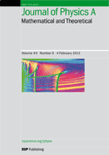
Journal of Physics A-Mathematical and Theoretical
Elevating Scholarly Dialogue in Mathematical and Theoretical PhysicsThe Journal of Physics A-Mathematical and Theoretical, published by IOP Publishing Ltd, is a premier peer-reviewed journal dedicated to advancing the understanding of mathematical physics, modeling, and simulation methods within the dynamic field of physics and astronomy. Established in the United Kingdom, this journal has made significant contributions over the years, maintaining a strong reputation as a Q1 and Q2 ranked journal across various categories, reflecting its influence in the scientific community. With a focus on innovative and theoretical approaches, it provides a platform for researchers, professionals, and students to disseminate their findings and engage with groundbreaking methodologies. Despite its lack of open access options, the journal's high impact factor and Scopus rankings, which place it in the top percentiles across multiple disciplines, underscore its critical role in fostering scholarly communication and collaboration in mathematical and theoretical physics. As we move through its converged years from 2007 to 2024, the Journal of Physics A continues to be a pivotal contributor to the landscape of contemporary physics, stimulating discussions and advancing knowledge in an ever-evolving realm.

Physical Review Applied
Fostering Collaboration for a Brighter Scientific FuturePhysical Review Applied is a prestigious journal published by the American Physical Society that serves as a vital platform for researchers in the field of applied physics. With an esteemed Q1 ranking in the Physics and Astronomy category and a commendable Scopus rank of #35 out of 243, this journal represents a significant milestone in disseminating cutting-edge research. Established in 2014, it focuses on the latest advancements and applications in various realms of physics, promoting interdisciplinary collaboration and innovation. Although not an open-access journal, Physical Review Applied offers a range of access options for readers and institutions, ensuring that high-impact research remains widely available. Researchers, professionals, and students alike will find this journal an essential resource for staying at the forefront of applied physics developments.

Quantum
Connecting scholars to the pulse of quantum advancements.Quantum, an esteemed Open Access journal published by the Verein Förderung Open Access Publizierens Quantenwissenschaft, serves as a pivotal platform for the dissemination of groundbreaking research in the fields of atomic and molecular physics, and optics. Since its inception in 2017, Quantum has emerged as a leader in the academic community, boasting an impressive impact factor within the top quartile (Q1) in its categories, ranking #6 out of 81 in Physics and Astronomy (miscellaneous) and #35 out of 224 in Atomic and Molecular Physics, and Optics in 2023. With its global reach, based in Vienna, Austria, Quantum is dedicated to promoting innovative research and fostering collaboration among scientists, researchers, and students alike. The journal encourages unrestricted access to high-quality publications, ensuring that vital advancements in quantum science are available to all, thereby facilitating knowledge exchange and accelerating scientific progress. Explore the cutting-edge developments at the forefront of quantum studies and contribute to a vibrant scholarly community.
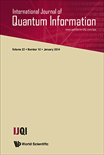
INTERNATIONAL JOURNAL OF QUANTUM INFORMATION
Empowering Scholars in Quantum InformationINTERNATIONAL JOURNAL OF QUANTUM INFORMATION is a prominent academic journal published by World Scientific Publishing Co. Pte Ltd that serves as a critical platform for disseminating research in the rapidly evolving field of quantum information science. This journal, which has an ISSN of 0219-7499 and E-ISSN 1793-6918, covers significant advancements from 2005 to 2024, providing insights into quantum computation, quantum cryptography, and related topics that are essential for both theoretical and experimental physicists. The journal's influence is recognized in the academic community, as evidenced by its classification in the Q3 category within Physics and Astronomy (miscellaneous) as of 2023, where it ranks at #45 out of 81 with a percentile of 45. Although currently not available as an open access journal, it remains a pivotal resource for researchers and scholars aiming to stay at the forefront of quantum information research. As the field continues to grow in importance and application, the INTERNATIONAL JOURNAL OF QUANTUM INFORMATION plays a vital role in fostering innovative discoveries and promoting academic collaboration.
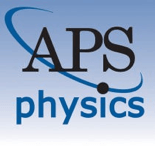
REVIEWS OF MODERN PHYSICS
Advancing Knowledge in Modern PhysicsREVIEWS OF MODERN PHYSICS, published by the American Physical Society, stands as a premier journal in the field of physics and astronomy, evidenced by its esteemed Q1 ranking in the 2023 category. With a notable ISSN of 0034-6861 and E-ISSN of 1539-0756, this journal has been a cornerstone for scholarly excellence since its inception in 1929. Operating from the heart of the United States at One Physics Eklipse, College Park, MD 20740-3844, REVIEWS OF MODERN PHYSICS enjoys a significant reputation, holding a top rank of #1 out of 243 in the Scopus rankings for General Physics and Astronomy, and securing its place in the 99th percentile. While it does not provide open access, the journal remains a critical resource for researchers and students alike, offering comprehensive reviews and breakthroughs that drive innovation and understanding in modern physics. As it converges towards its centennial year in 2024, the journal continues to foster significant academic discourse, making it an invaluable platform for the dissemination of pioneering ideas and research outcomes.
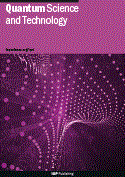
Quantum Science and Technology
Transforming Ideas into Quantum BreakthroughsQuantum Science and Technology is an esteemed academic journal published by IOP Publishing Ltd, specializing in the cutting-edge fields of quantum physics and technology. With a strong emphasis on innovation, the journal serves as a vital platform for researchers, professionals, and students engaged in Atomic and Molecular Physics, Electrical Engineering, and Materials Science. Since its inception in 2016, the journal has rapidly ascended to prominence, achieving Q1 rankings across multiple categories in 2023, reflecting its high impact and influence in the global scientific community. The journal is recognized for its rigorous peer-review process and commitment to disseminating groundbreaking research that pushes the frontiers of quantum science. Although it is currently not open access, the journal remains a pivotal resource for those seeking to stay at the forefront of developments in quantum technology and its applications. As part of its objectives, Quantum Science and Technology aims to connect diverse scholarly perspectives, fostering collaboration and knowledge exchange that can drive forward the quantum field.

JOURNAL OF EXPERIMENTAL AND THEORETICAL PHYSICS
Exploring the Nexus of Theory and ExperimentationJournal of Experimental and Theoretical Physics is a distinguished publication in the field of physics, dedicated to disseminating pioneering research and fostering intellectual discourse in both experimental and theoretical domains. Published by Pleiades Publishing Inc, this journal has established itself as a crucial platform for physicists, with a commendable Q3 categorization in the 2023 rankings within Physics and Astronomy, illustrating its impactful contributions to the discipline. The journal features a wide array of articles that delve into the intricacies of physical theory, experimental techniques, and applications, making it an invaluable resource for researchers, professionals, and students alike. Although it operates under a traditional access model, its longstanding history, dating back to 1980 and converging years through to 2023, underscores its commitment to advancing the frontiers of physics knowledge. The journal is also notable for its engagement in the scientific community, aiming to bridge the gap between theoretical predictions and experimental validations. As a part of Pleiades Publishing, it continues to uphold rigorous standards of academic excellence, inviting contributions that push the boundaries of current understanding and stimulate further exploration in the fascinating world of physics.
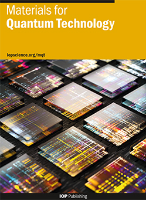
Materials for Quantum Technology
Fostering Global Insights in Quantum ScienceMaterials for Quantum Technology is a pioneering open-access journal published by IOP Publishing Ltd, dedicated to advancing the understanding and application of quantum materials and their technologies. Since its inception in 2021, this journal has become a significant platform for researchers, professionals, and students in the fields of condensed matter physics and materials science. With an impressive impact ranking, including a rank of #156 in Condensed Matter Physics and #86 in Atomic and Molecular Physics within Scopus, it offers an interdisciplinary view that facilitates the exchange of innovative ideas and research findings. The journal's open-access model ensures that groundbreaking research is accessible to a global audience, fostering collaboration in the rapidly evolving field of quantum technology. Materials for Quantum Technology continues to support the growing community of quantum researchers, playing a crucial role in the development of new materials and technologies that will shape the future of computation, communication, and sensing.
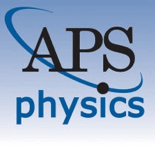
PHYSICAL REVIEW A
Elevating Understanding of Quantum PhenomenaPHYSICAL REVIEW A, published by the American Physical Society, is a leading journal in the field of Atomic and Molecular Physics and Optics, boasting a Q1 category ranking in its area for 2023. With an ISSN of 2469-9926 and an E-ISSN of 2469-9934, this journal plays a pivotal role in disseminating high-quality research findings, theories, and methodologies that shape current understanding and advancements in the discipline. Although not an open-access journal, it remains highly accessible to professionals and academia through institutional subscriptions. The journal's impactful contributions are evident from its Scopus rank of #70 out of 224 in the field, placing it in the 68th percentile for scholarly impact. As a hub of innovative research and a vital resource for both students and seasoned researchers alike, PHYSICAL REVIEW A remains essential for those seeking to stay abreast of breakthroughs in atomic and molecular studies, as well as optics and photonics.
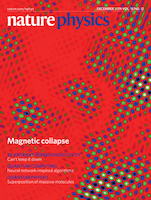
Nature Physics
Exploring the Frontiers of Physics InnovationNature Physics is a premier journal dedicated to publishing high-impact research in the realm of physics, brought to you by the esteemed NATURE PORTFOLIO. With its ISSN 1745-2473 and E-ISSN 1745-2481, this journal has established itself as a vital resource for the physics community, enjoying a remarkable Q1 quartile ranking in the Physics and Astronomy category for 2023 and securing an impressive Rank #5/243 and a 98th percentile ranking in Scopus. Since its inception in 2005, Nature Physics has become a catalyst for innovation, featuring cutting-edge research that encompasses a broad spectrum of physics disciplines. Although it operates under traditional subscription models, it maintains a commitment to accessibility through selective publications and editorial excellence. Positioned in Berlin, Germany, this journal is a must-read for researchers, professionals, and students who seek to stay at the forefront of advancements in physics.